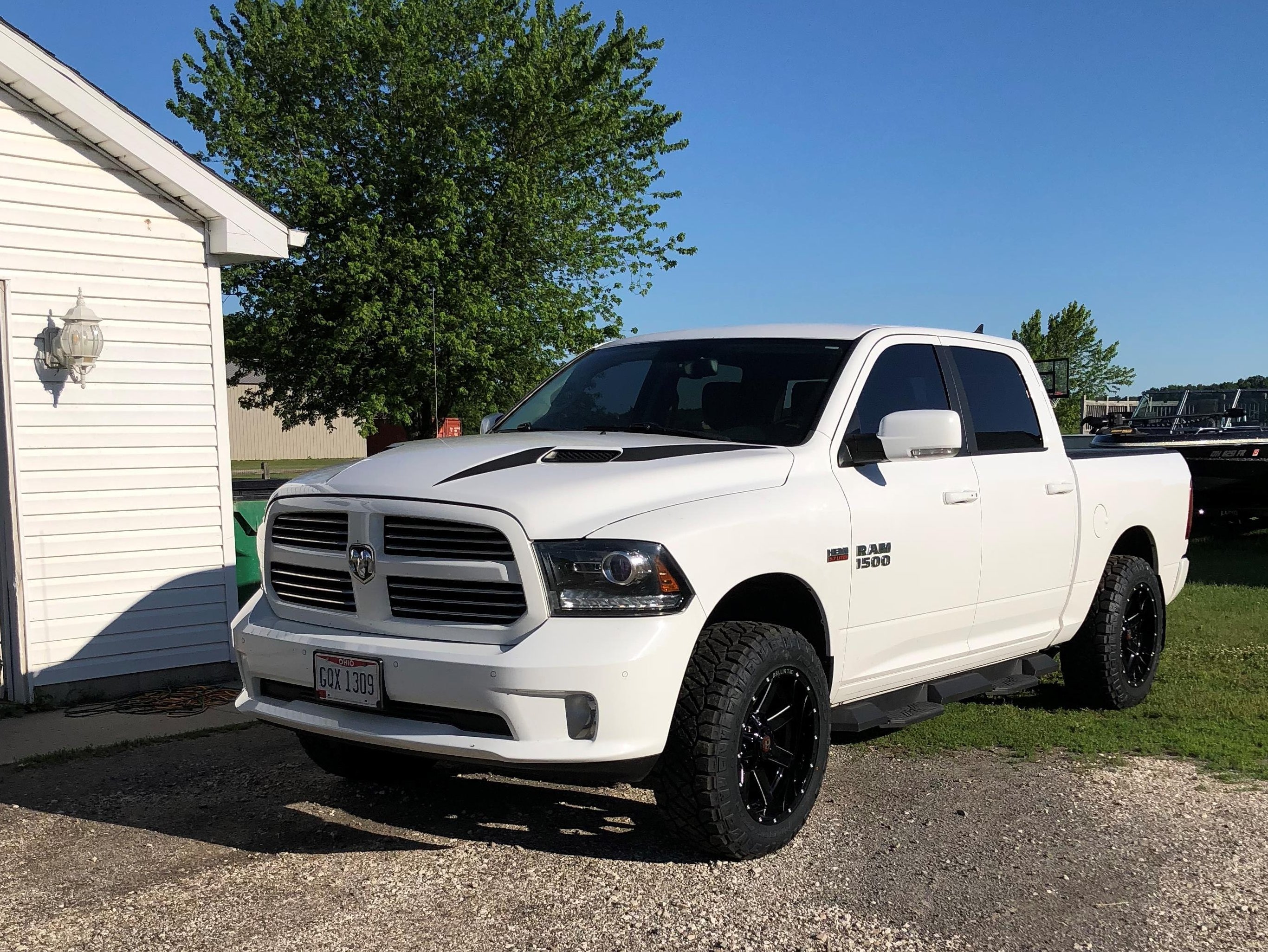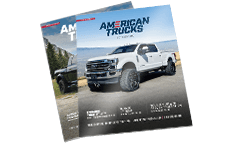Guaranteed Free Delivery by 12/24! available on most items - Details
The Best Truck Exhaust Systems for Serious Towing

By Averi Melcher - February 19, 2020
The trailer is packed. You have enough food for a couple weeks (or a short zombie apocalypse) and the fancy sub zero sleeping bags are laid out on the bunks. Full load of fresh water? Check. And you can’t forget all the mountain bikes and safety gear. The fishing tackle. Firewood. This camping trip is going to be EPIC.
Pulling this trailer is going to require brute force, you’re realizing. The concrete queen compact SUV parked in the garage ain’t gonna cut the mustard. You need a serious truck to drag this behemoth vacation home across the countryside. But is your pickup truck even up to the task?
Today’s pickups are definitely in a different class than previous generations. Smaller displacement, higher horsepower, more efficient on fuel. Think about this: the 1980 Ford F-150 came standard with a 4.9L inline-six with 120hp. Today’s F-150 engines range from 290hp to 450hp! But for some reason, it’s never enough. And when you have a tough towing job to deal with – whether for work or play – stock power still might not be good enough.
And if we’re being honest, pride is involved. Who doesn’t want to puff out their chest and say, “My truck can tow more than yours”? Maybe you can squeak by with the performance you’ve been getting from your rig, but there’s nothing wrong with wanting more, especially when you’re towing.
What Exhaust System Parts Do
What does each piece of an exhaust system do – at least, as it relates to installing performance exhaust on your truck? Let’s start at the back and work our way forward.
Exhaust Tip
Explanations don’t get much easier than this. The exhaust tip is just to make it pretty. It’s the one piece of a truck exhaust system that you see rather than just hear. It can be chrome, polished steel, or powder-coated black, and it’s stuck to the end of the tailpipe.
Tailpipe
This section of exhaust pipe is aptly named for its location. The tail end. The direction the exhaust finishers point from under the truck is defined by this piece. There may be a single or a dual tailpipe, pointing out the side behind the rear wheels or, most commonly, out past the back bumper.
Muffler
A lot of the magic happens in the muffler. Baffles and sound-absorbing material like glass beads or matting in the muffler give each one its unique sound, not to mention influence its volume level. Want a louder or quieter exhaust? The muffler is where your goal is achieved.
Exhaust pipe
Isn’t all the piping exhaust pipe? Technically, yes. But this section of the exhaust is uncreatively called either the midpipe or exhaust pipe. It’s the stretch in front of the muffler that goes to the emissions control unit like the catalytic converter. Depending on the make and model, it may have a resonator built in, kinda like a mini muffler.
Catalytic Converter (gas)
With all the new emissions standards, a catalytic converter is installed in every gas-fueled passenger vehicle. Trace amounts of catalyst materials like platinum, palladium, and rhodium react with unburned hydrocarbons in exhaust to superheat them and convert them to harmless elements. Think of it like a mad scientist’s lab under your truck.
DPF (diesel)
Diesel trucks, on the other hand, have concentrations of soot in the exhaust. The DPF, or diesel particulate filter, collects the soot where it’s eventually burned off to regenerate the filter.
Which Parts of my Truck Exhaust System Should I Change?
If all you’re looking for is increased volume (do we have a Will Ferrell cowbell meme?), then replacing the stock muffler with a performance muffler is all you need. But that’s not what we’re talking about here, folks. A louder exhaust as you’re towing a fully-loaded trailer down the highway isn’t solving anything. You’re in this for towing performance.
For the best performance, you’d look for a Race Series truck exhaust system that eliminates restrictive emissions controls. Think of it like exhaling with your mouth wide open versus breathing out through a drinking straw. But you’re towing more than a quarter-mile at a time, and most states have some type of law requiring a functioning emissions system. So, that’s out. Here are your options.
Cat-Back Exhaust Systems
The most common truck exhaust systems on the market are cat-back exhaust systems. They change all the parts of an exhaust system from the catalytic converter back to the exhaust finisher – increased-diameter exhaust pipe, muffler, tailpipe, and exhaust tip. In nearly all cases, they’re bolt-on kits that don’t require welding.
Aside from a race kit or a custom performance exhaust, this is where the best gains will happen, helping you haul more, and more efficiently.
Axle-Back Exhaust
Another option is to install an aftermarket axle-back exhaust system. This is similar to a cat-back exhaust except the exhaust pipe isn’t replaced. Some increased exhaust flow still occurs from a replacement muffler and tailpipes, but it’s a little less effective overall. The benefit is it’s usually a little easier on the pocketbook.
Options for Diesel Trucks
Diesel truck owners, you just have to be different, don’t you? Well, we’ve got truck exhaust systems available for you, too.
One option is a downpipe-back system, or DPF-back exhaust system. Like a cat-back exhaust, it replaces everything from the exhaust pipe back. The DPF filter is still in use, carefully cleaning itty bitty black particles from your exhaust to keep the environment clean.
The other potential option is a turbo-back exhaust system. The DPF filter is tossed and a high-flow downpipe is installed in its place. Definitely not ideal for ol’ Mother Earth, but you’ll get power gains.
Which is better- a turbo-back or DPF-back exhaust? If you have smog testing in your state, you’ll want to stick with a DPF-back exhaust system. Otherwise, you’ll find out the authorities aren’t just blowing smoke about pulling your truck off the road for failing your test. If you don’t plan on driving your truck where smog standards are in place, go with the turbo-back system. Just beware – additional work could be required.
What Gains Can I Expect?
The gains you’ll get from changing the exhaust really depend on the kit you choose and where you’re starting from.
How much difference can you expect for your truck’s towing power? You could unlock 2 to 5 horsepower and up to 10 lb.-ft. of torque or so from a simple axle-back change-up on an entry-level pickup. Maybe twice that for a cat-back exhaust system. But for a higher-horsepower pickup or a diesel truck, the torque increase could be 40 lb.-ft. or more. Plus, the power is often available at a much lower RPM range, helping you haul out of the ‘hole’.
Almost certainly, you’ll gain notoriety on your block. Increasing the decibels your truck emanates isn’t always a friend-maker, but your truck is going to sound awesome.
5 of the Best Truck Exhaust Systems to Think About
If you’re in the market for a new exhaust system for your hauler, we have a few suggestions.
1. Magnaflow Street Series Cat-Back Exhaust System
One of the most popular options available for a wide range of models is the Magnaflow Street Series Cat-Back Exhaust System. The exhaust pipe has an increased 3-inch diameter and can be bought with a range of exhaust tip options like single rear or side exit, or dual-split or quad-split exits. The Street Series muffler has a deeper rumble than the stock muffler at idle and a raspy growl when you honk on the gas, but nothing too extreme. The increased exhaust flow will give you decent gains, although they don’t specify exactly how much.
2. Corsa Sport Series Cat-Back Exhaust System
A fine choice for the 2019 Ram 1500 and other mass-market models is the Corsa Sport Series Cat-Back Exhaust System. Definitely on the more aggressive side of things, the Corsa Sport Series turns the screws up on volume at idle, and especially when you’re laying into the gas. Choose from side or rear exits and tip designs for a custom look.
But the more interesting info is its performance. While Corsa doesn’t commit to HP and torque numbers, they estimate exhaust flow increase at around 42%. That has to do something for you.
3. MBRP XP Series Resonator-Back Exhaust System
An amazing choice for a slightly less-involved system is the MBRP XP Series Resonator-Back Exhaust System. It leaves the stock exhaust pipe in place but increases exhaust flow through the muffler and 3”-diameter tailpipes. Made of 409 stainless steel and with kink-free mandrel-bent tubing, the XP Series exhaust will do just fine for most applications.
4. aFe Large Bore HD Series Turbo-Back Exhaust System
If your full-size diesel truck needs more towing power, aFe Large Bore HD Series Turbo-Back Exhaust System is going to get it for you. It exhales easily through 4-inch exhaust pipes that’s eliminated the DPF filter. The high-flow muffler in the kit will get you some increased volume, and you’re guaranteed to hear the turbo spool up faster and louder. Just be careful with your emissions regulations…
5. Magnaflow Pro Series DPF-Back Exhaust System
For diesel performance that still abides by emissions standards, you can’t go wrong with Magnaflow Pro Series DPF-Back exhaust system. 4-inch exhaust pipes and a Pro Series muffler make the fumes fly through this system at record pace. It’s available in aluminized, stainless steel, or black finishes for a sharp look out the back bumper. The noise will certainly be louder than stock both at idle and when you’re accelerating, but that’s what you’re looking for, isn’t it?
When ‘more power’ is your motto for your boat, ATV, horse, or travel trailer hauler, an aftermarket exhaust system is one of the easiest and most inexpensive ways to get it. Whether it’s one of these five or you’re after another option, you’ll find it available at a competitive price at AmericanTrucks.

